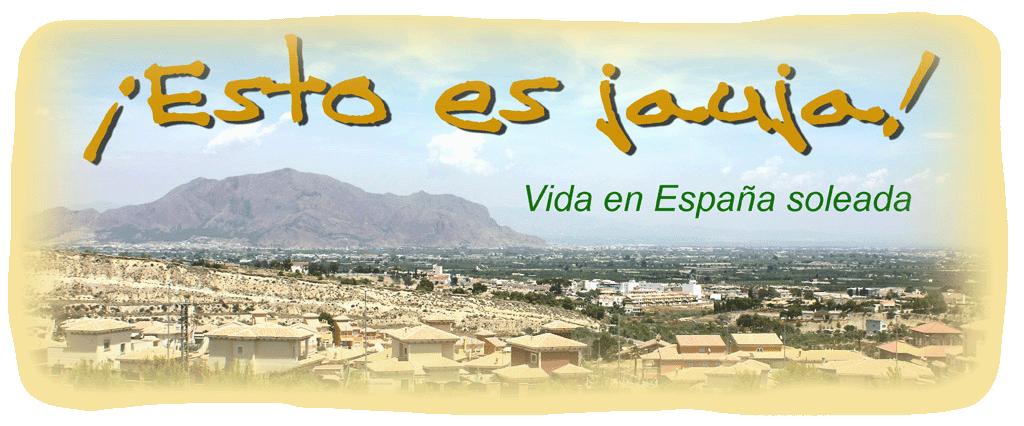At our Spanish class yesterday, our teacher explained to us the difference between the "huerta" to the east of Bigastro and the "campo" to the west.
The dictionary defines the huerta as a kitchen garden or orchard and the campo as countryside. However when you visit the campo to the west of Bigastro you find lemon and orange groves much the same as you do in the huerta.
Our teacher's explanation made sense of this. He told us that the huerta to the east of the town was irrigated by a system of canals which are fed from the River Seguro. This complex web of water channels dates back to Arabic times and is described in a leaflet published by the Ayuntamiento in Bigastro. From what I understand, there is one main channel which then feeds into smaller channels. The flow is regulated by gates which are used to direct water to higher land.
The campo, on the other hand, traditionally relied upon rain for irrigation. Agriculturalists on the campo use reservoirs to collect and store water for irrigation which is then fed via pipes to the groves of citrus trees.
Eduardo went on to explain that the Vega Baja was one of three fertile plains in the region. The other two are the Vega Media and the Vega Alta. The huerta is the kitchen garden of the Vega Baja. Apart from citrus fruits, all manner of vegetables and fruit being raised on the fertile land; artichokes, cabbages, lettuce, melons etc etc.
We concluded our geography lesson by listing the principle towns of he Vega Baja: Albatera, Algorfa, Almoradí, Benejúzar, Benferri, Benijófar, Bigastro, Callosa de Segura, Catral, Cox, Daya Nueva, Daya Vieja, Dolores, Formentera del Segura, Granja de Rocamora, Guardamar del Segura, Jacarilla, Los Montesinos, Orihuela, Pilar de la Horadada, Rafal, Redován, Rojales, San Fulgencio, San Isidro, San Miguel de Salinas and Torrevieja which you can see on this map with the names in Valenciano.


No comments:
Post a Comment